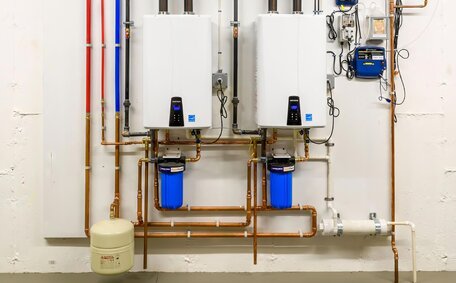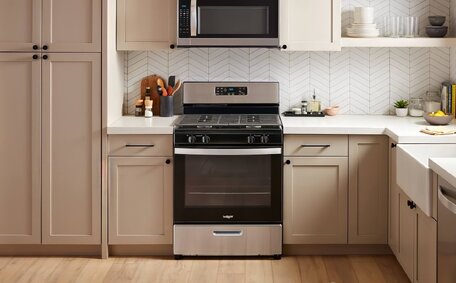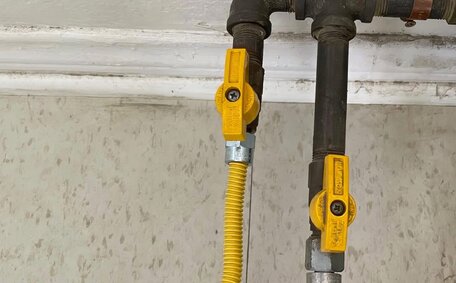
How Hard Water Hurts Hot Water Heaters
Hard water leaves mineral deposits in heaters, pipes and tanks. This limescale reduces efficiency, lifespan and hot water availability. Contact us for affordable water softening solutions.
Read MorePipe relining is a modern technique for mending pipes, significantly extending the lifespan of plumbing infrastructure without extensive excavation or complete overhauls. This method involves inserting an epoxy resin liner into the existing pipe, effectively sealing cracks and holes to restore functionality.
Compared to full pipe replacement, the pipe repair costs offer a cost effective way and minimally disruptive solution for Sydney homeowners dealing with root intrusions, deteriorated pipes, or water damage. Once the resin sets, the newly lined pipe integrates with the existing structure, offering a reinforced solution stronger than traditional pipes.
There are several factors specific to pipe relining in Sydney that can influence the costs of a project and lead to price variations between plumbers. The length pipe, diameter, the pipe damage, pipe material, and location accessibility all can affect the outcomes. Understanding how each detail, particularly the condition of your pipes, affects costs can help you estimate potential financial implications.
The cost of a pipe relining project can vary significantly, with factors such as pipe size and other specifics influencing the final quote. The pipe relining costs typically ranges from equivalent of $80 to $250 per foot, but the final quote for any relining job depends on variables like the size, length, location, material and the extent of pipe repair needed.
This article examines the key elements that affect pipe relining costs, enabling Sydney homeowners to make informed decisions about their options. Familiarising yourself with these factors allows you to accurately compare estimates and find the best expert for your pipe relining needs, confirming it as a superior alternative.
The categorisation and features of your drainage pipes play a central role in the estimation of pipe relining costs. Longer piping sections require more epoxy resin for adequate reinforcement, driving up the cost per unit. For instance, a pipe with a 100mm diameter requires at least three times more resin than one with a 50mm diameter for adequate lining.
Relining extensive drainage systems, particularly those with damage, involves more materials and setup time, affecting the total cost. As the extent of your drainage network grows, relining costs increase due to the need for more equipment, resin, and labour.
Navigating the complexities of your plumbing system takes expertise, leading to variable charges by plumbers, particularly for larger commercial properties. Industrial pipes with wider diameters can incur costs ranging from $150 to $300 per linear metre. For residential properties, the relining of standard 100mm pipes averages around $130 per metre.
Finding ways to access location damaged pipe can significantly influence relining costs, with professionals adopting techniques to carry out the work efficiently. Compact, restricted areas or locations with damaged pipelines beneath structures can increase costs due to the need for additional equipment and labour, even if replacing the entire section isn’t necessary. Using inversion pipe technology to embed resin liners and create a new pipe within the existing one in difficult spaces can increase costs.
You need to know that sites with narrow access points, extensive root breaches, dense accumulations or sections of crumbled sewer pipe often bear steep relining charges as they represent significant damage to your sewer infrastructure as the backdrop complications need dig and repair initially. For complex tasks, plumbers may charge $100 to $150 per hour, with prices often rising due to the need for additional effort and equipment.
Commercial sites often have special access requirements and health regulations that residential properties don’t, Such considerations can notably increase the relining costs for your business. Navigating these complexities and expanded piping networks drives up the costs compared to simpler residential jobs.
The kind of pipeline substance you own may sway the complexity job poses and the cumulative expenses linked to pipe relining. Typical residential drainage pipes, whether they are clay, concrete, PVC or cast iron, form the basis of the more epoxy resin liner being relined. Older metal pipes can often have more damage requiring extensive repairs first.
Cast iron pipes are prone to rust and corrosion over decades of use. Sections, especially those for hot water with heavy build-up or pitting, take more effort to thoroughly clean and prep for epoxy resin liners. The complexity of the material adds to the labour costs needed for the job.
Blocked drains damaged by tree roots or clogged with debris, in particular, may incur costs for pipe patching, requiring more equipment and materials for cleaning before the relining can begin. Removing solidified grease or sludge also adds steps to the process which drives up costs.
Depending on the type of pipe material, high-performance resin liners specifically designed for certain pipes may be recommended too. While pricier, they provide greater durability and protective abilities to maximise the lifespan of your pipes.
There are several potential risks and intricacies that can also impact the costs of a pipe relining project.
Bends, junctions, and transitions in your pipe network increase the difficulty for plumbers to insert lining equipment and resins. The intensity of bends, one of the factors can be measured by ratios, with more extreme bends requiring custom liners costing over $250 per metre.
Subterranean pipelines or those traversing beneath concrete edifices also contribute intricacy, yet can easily be tackled with advanced relining techniques. Special apparatus for distant camera surveillance and clearing stoppages in a sewer pipe is necessary, impacting how much does sewer pipe maintenance tally up financially.
Site conditions also play a role. Constrained access around structures and greenery may need digging up methods involving extra excavation effort. Likely, the high water tables necessitate dewatering equipment to ensure your sewer drain relining trenches stay dry when relined pipes are in the process of being installed.
In summary, a greater number of risks, bends, transitions and location complexities in your pipe layout adds more steps to the relining process. This amplified work duration and specific machinery integral to the pipe relining process, even absent of a broad need to trench, become part of the estimate regarding your existing piping.
Labour costs, equipment hire, and material prices are significant contributors to the total expenditure on pipe lining, each playing a role in financial planning. Trenchless sewer techniques used in pipe relining incur lower costs due to less digging than full pipe replacement, but still require expenditure on:
Trenchless relining causes minimal disruption compared to traditional excavation methods for sewage system repairs, offering ecological advantages too. Less heavy machinery equates to lower CO2 emissions and reduced disruption to surrounding infrastructure and landscaping.
When obtaining quotes for sewer pipe relining, it is essential to consider not only the bottom-line price. The expertise and reputation of the contractor affect the overall value, ensuring that pipe relining is a sound investment.
Inquire about how much does pipe relining work cost and about the warranties and guarantees they offer on such projects. Established companies often provide stronger assurances, backed by their lengthy industry experience. They also invest in the latest equipment and advanced training for their technicians.
While upfront costs may be higher than less qualified contractors, the long-term durability and performance of your pipes makes pipe relining worth investing in. Reputable pipe relining specialists understand all the variables involved and oversee projects to industry best practices, where relining also ensures structural integrity of the pipes.
Choosing between relining and pipe replacement, it’s apparent that pipe relining can be a significant initial investment, with costs ranging from $80 to $250 per metre, depending on various pipe factors. To help manage the overall cost, many plumbing companies offer payment plan options.
Payment plans allow the total project costs to be divided into manageable periodic payments over an agreed time frame, such as 12 or 24 monthly instalments. This pipe relining approach can save homeowners from the financial impact of paying the full cost upfront.
Some plumbing contractors provide financing assistance by working with lending partners. These financing plans, akin to a personal loan, allow homeowners to spread the project cost across structured repayments over 1 to 5 years with interest.
When evaluating payment plans or financing, it’s crucial to meticulously review all terms and conditions, including additional fees, early repayment options, and potential impacts on property ownership. Reputable plumbers will make sure to be transparent about the details to avoid surprises down the track.
When comparing quotes and selecting a professional for your pipe relining project, ask plumbers the following questions:
The answers can aid in appraising competence tiers and anticipated results for your specific circumstances.
When choosing a plumber for pipe relining, it’s important to take into account their industry experience and the service warranties they offer.
They invest in high-quality inversion equipment and epoxy resins to provide long-lasting results.
An experienced plumber can provide accurate evaluations of your pipe system’s variables to estimate relining costs and anticipated results. They also mitigate risks through proper planning and execution based on previous projects.
Reliable contractors provide workmanship guarantees alongside material warranties from manufacturers, increasing trust in their services. This provides reassurance if any defects occur down the track. Longer warranties often reflect greater confidence in application quality.
While upfront expenses may be higher than less qualified plumbers, the value lies in long-term durability and performance. Paying a premium for quality materials and expertise saves money over time compared to premature repairs or replacement.
Hard water leaves mineral deposits in heaters, pipes and tanks. This limescale reduces efficiency, lifespan and hot water availability. Contact us for affordable water softening solutions.
Read MoreIt’s important to routinely check your gas appliances for any issues. Signs of problems include gas leaks, strange sounds, odd smells and more. Have a professional inspect your gas appliances annually and service them regularly for safety.
Read MoreUpgrading your gas meter is a simple process completed by registered technicians. It involves disconnecting your gas supply for 15 minutes to swap the old meter for a new digital smart meter. The upgrade is free and improves accuracy.
Read MorePicnic Point, 2213 NSW
We will call back as soon as possible.




